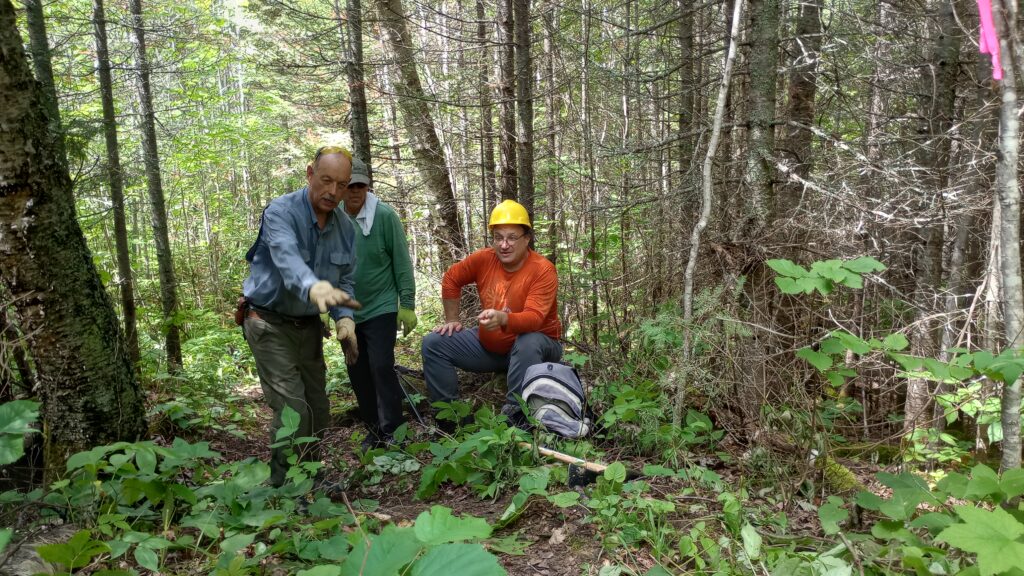A bead of sweat dripped down my face, but I couldn’t wipe it off. My hands were plunged deep into soil as a volunteer as I attempted to remove a rock from the side of the trail. Like a loose tooth, the rock wiggled more and more until it shed small roots tying it to the ground. Now freed, the rock would no longer trap water on the South Lake trail.
For seven days this summer, volunteers from Northwoods Volunteer Connection (NVC), in partnership with the U.S. Forest Service, performed critical trail work on the Moss Lake and South Lake trails. NVC is a nonprofit organization dedicated to creating a community of stewards in and around the Superior National Forest. We lead and support projects like trail work, tree planting, and clean-ups, along with providing educational and training opportunities for volunteers. This year, 10 volunteers contributed 150 hours to improve these trails, funded in part by an American Trails Legacy Grant.
Located near the Gunflint Trail about 30 miles out of Grand Marais, the Moss Lake and South Lake trails are lesser-known hiking trails that invite exploration into a little-traveled area. The South Lake Trail stretches four miles from Rockwood Lodge on Poplar Lake into the Boundary Waters Canoe Area Wilderness and South Lake. It passes through areas of fairly easy terrain, near multiple lakes, and through great wildlife habitat. Despite volunteer conversations and the clanking of tools, we were even honored with a moose sighting one day.
Moss Lake Trail, entirely outside the Wilderness boundary, splits off from South Lake Trail and heads three miles east to the Caribou Rock trailhead. Along the way, it visits Moss Lake’s shore, crosses lichen-covered ledges, and leads to spectacular views of the Boundary Waters and distant Canada.
Few places have more water than the Superior National Forest, and water erosion is a major challenge for trails. NVC volunteers improved trail tread and drainage, helping rain exit the trail quickly and efficiently. Eroded areas were reinforced with rock so hikers will stay on the trail and not widen it by trying to navigate around wet areas. Volunteers even replaced a failing boardwalk and hauled out the old lumber. But first, we had to clear overgrown areas to make the work sites visible. After such a wet start to the season, the boreal forest was more like a jungle.
Volunteers, many of them Gunflint Trail locals, overcame heat waves, persistent bugs, and a day of rain to make a difference for these trails. Julie Gavran, a volunteer on vacation from Texas, made time to pitch in. “As an avid hiker, it took years to realize the effort that goes into maintaining trails, especially in non-desert climates. I truly see the value of trail maintenance for these trails!”
It’s an enormous effort to steward trails in the Superior National Forest, but it’s also rewarding to make new friends and contribute to a better, more sustainable trail. NVC is incredibly grateful for every volunteer who attended our projects and for the support from the U.S. Forest Service. Forestry Technician Brett Gerrard says, “Working with the volunteers from Northwoods Volunteer Connection was a great pleasure. We worked hard, had a lot of fun and accomplished a lot together. I’m looking forward to our projects next year and continuing our collaboration on future projects in the coming years.”
NVC will be back at it next year with projects to make these trails and other trails more sustainable for years to come. You can learn more about NVC and the work we do at northwoodsvolunteerconnection.org.

